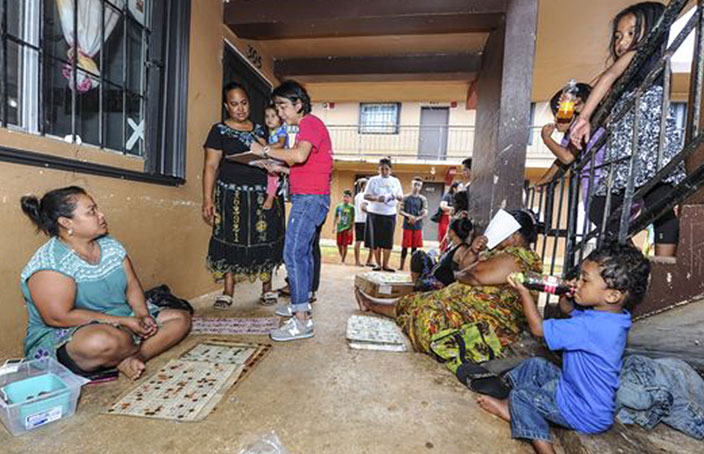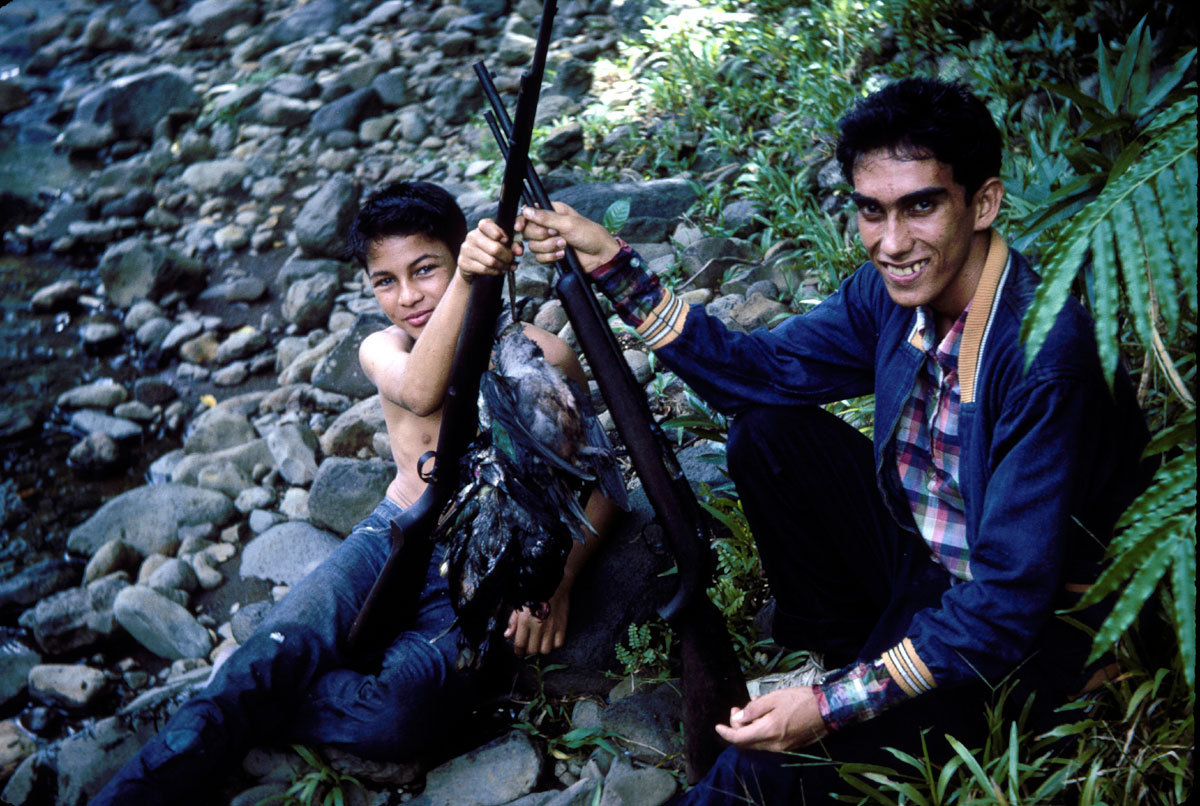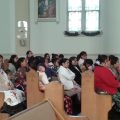Peace on Earth? Not the Other Night at Hemlani
A couple of nights ago I attended a wake for a Pohnpeian youth who had been stabbed to death two days earlier. It happened in a drunken fight here on Guam outside the Hemlani Apartments?a low-end unit situated right next to what looks like might be the island dump. The Hemlani Apartments have made the front page of the local newspaper quite a few times over the past year, usually because of some minor crime or drunken brawl.
Some hours before the wake, I drove over to see the place. For all that I had heard and read about the place, I had never visited the apartments myself.? Even in the hours I spent before Christmas driving back roads to find the homebound and pay them a pastoral visit, I had never come across the famous Hemlani Apartments. But there they were, with kids running around the parking lot and adults sitting on the steps out front, chatting in a language that was certainly not English. A few of them recognized me, came over and began chatting in Chuukese. When I asked them where the family of the boy who stabbed the Pohnpeian young man lived, they pointed to a first floor apartment but said that everyone in the family was still away attending the court hearing.
I promised the people that I?d be around to offer help to both families?the victim?s and the killer?s. It should be easy for me to connect with the latter, I figured, since one of our deacons is from the same island. As for the victim?s family, I knew that I?d be seeing them at the wake that same evening. But what real help can you provide to families that have been devastated when their sons?who knew one another well enough to drink together?turned on one another for some reason? The end result is that both sons are lost to them at a much too early an age.
Before leaving the place, I looked around one more time, thinking all the while how familiar the apartment building was to the housing project in which I grew up. Hemlani was more run-down than the Kenfield Apartments in Buffalo, but the people seemed to spend as much time as they could outdoors just as we once did.? Who wants to spend time in a stifling unit when you have the chance to romp outside?
After finishing the parish mass that evening, Dave Antonelli (an ex-Jesuit, longtime Pohnpei resident and ordained deacon) and I jumped into my car and drove to the house where the wake was to be held. Outside was a large tarpaulin with seats for over a hundred, a line of tables filled with food, and a memorial wreath next to an enlarged photo of the young man who had died. After a welcome from one of the family members, I led the prayers and two Pohnpeians read the scripture passage and the prayers of the faithful. When it came time for me to deliver some remarks, I simply proposed that we take seriously the reading about the bread of life. The bread that sustains us, I pointed out, is not just the sacrament, but that which we share with others in our family (big family and small). It?s food, but it?s also love and the other sentiments that nourish us just as surely as the nutrients we eat. A family member once is a family member always, I told them. He is not dropped because he?s done something shameful or has come to an inglorious end.
In the end, of course, we are all family to one another, even if tragically we don?t always recognize this. That?s not just a sweet note on which to end Christmas letters, but a critical point at times like this in the Hemlani Apartments.







